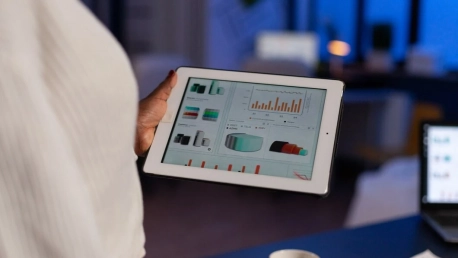The Manufacturing Predictive Analytics market is on the verge of a significant transformation, promising substantial growth particularly within the burgeoning economies of the Asia-Pacific region. As economic conditions in these areas improve, a surge in investment and development is imminent, positioning this market at the forefront of innovation and expansion. Providing companies with the analytical tools to foresee production outcomes, streamline operations, and enhance product quality, predictive analytics is becoming indispensable in a competitive manufacturing landscape. With hefty data sets and sophisticated algorithms, this technology is not just a trend but a cornerstone for future growth, enabling manufacturers to anticipate issues, reduce waste, and optimize resource allocation.The rise of Manufacturing Predictive Analytics has captured the attention of industry powerhouses like IBM, Microsoft, Oracle, and SAS. These companies are not just participants but key drivers in a fiercely competitive arena where strategic positioning and innovation are essential for survival. One might wonder what sets these giants apart – it’s their continuous pursuit of advancement and their unwavering commitment to revamping the very fabric of manufacturing, from automobile assembly lines to the precise concoction of chemical compounds. Their presence in the market is a testament to the potential of predictive analytics, heralding a new era of smart manufacturing.
Market Dynamics and Competitive Landscape
In dissecting the Manufacturing Predictive Analytics market dynamics, one cannot overlook the strategic segmentation that delineates this industry. This segmentation is not an arbitrary process but a nuanced distinction of market categories by type and application. It acknowledges the unique needs and preferences that differ across various sectors, including automotive, aerospace, and chemical industries, to name a few. This granular approach allows stakeholders to identify precise opportunities and tailor their strategies accordingly, whether it’s focusing on building construction applications or addressing the complex requirements of the aerospace sector.The role of distribution channels in this ecosystem is equally noteworthy, as the effectiveness of direct sales versus indirect methods can significantly sway market reach. This critical choice between distribution strategies affects how swiftly and effectively predictive analytics solutions can penetrate the market, influencing overall accessibility and adoption rates. The competitive landscape is shaped not just by the presence of industry giants but also by the strategic selections made around distribution. It’s a delicate balance, ensuring that products not only reach the end-users but also fit seamlessly into their existing workflows.
Technological Innovations and Sustainability
Weaving through the tapestry of the Manufacturing Predictive Analytics market is the undeniable impact of technological disruptions. Advancements in AI, for example, have not merely tweaked but fundamentally transformed manufacturing processes. Addressing quality assurance and industry standards becomes more complex yet more critical as manufacturers integrate cutting-edge tech into their operations. The success of predictive analytics is inexorably tied to reliability and compliance with market norms – manufacturers must adapt and sustain high levels of product integrity to remain competitive.Another prevailing theme in the manufacturing narrative is sustainability. The demand for environmentally friendly and socially responsible practices is not just a nod to current trends but a response to a deeper consumer consciousness about the planet’s health. The focus on sustainable operations reflects a broader industry shift – the understanding that for business growth to be meaningful, it must not come at the expense of ecological or social well-being. Global investors are taking note, recognizing that funding innovation must also entail a commitment to sustainability.
Strategic Development and the Future Outlook
The Manufacturing Predictive Analytics sector stands on the brink of significant change, notably in Asia-Pacific’s thriving economies. With these regions’ economic improvements, a pivotal surge in investments is on the horizon, catapulting this market to innovation’s cutting edge. These tools are crucial for manufacturers to outperform the competition by predicting production results, enhancing efficiency, and elevating product standards. Utilizing vast data and intricate algorithms, predictive analytics is pivotal for future industrial growth, allowing for the preemption of problems, minimization of waste, and better use of resources.Industry titans such as IBM, Microsoft, Oracle, and SAS are not merely observers but are propelling this fiercely competitive sector. Their distinct edge lies in their relentless drive for innovation and dedication to transforming manufacturing, from automotive production to complex chemical manufacturing. Their role in the predictive analytics market underscores its importance and signals a new era of smart manufacturing.









